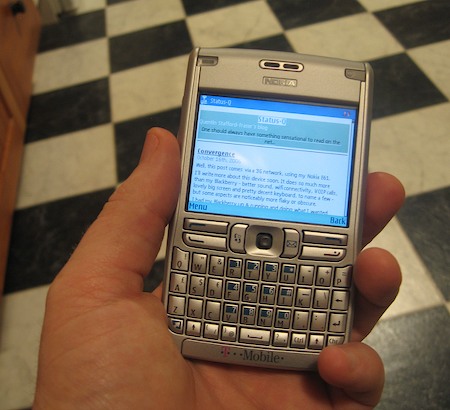I detect a worrying trend here.
It started when we got the ‘green bin’ recycling scheme, and Rose began pressuring me into recycling everything that could possibly be recycled. I grumpily acquiesced, but am now rather proud of the small amount of stuff in our non-recyclable bin when it’s collected each fortnight.
Then we made a recent decision to start buying organic food when possible, despite the premium prices at Waitrose. This is the modern equivalent of tithing to the church, I guess, but we think of it as one of the little luxuries that you’re allowed when you don’t have children to feed as well!
And now we even have a box of local vegetables & fruit delivered by the nice people at the Cambridge Organic Food Company.
But no, I’m not about to grow a beard, and any Birkenstock representatives considering contacting me as a result of this post should think again. Sometimes, though, this green stuff provides me with an excuse to buy gadgets. Actually, almost anything provides me with an excuse to buy gadgets. That’s another thing you can do when you don’t have kids.
This particular toy is a sensor which clips onto the main power lead coming into my house:

and provides a nice little wireless display telling us how many kilowatts we’re currently using. Just about 1.1, at the moment:

It can also tell us in pence per hour, or tonnes of greenhouse gas per year, should we so desire. It’s also a temperature and humidity display. Quite sweet. It would take a long time, I think, for me to save sufficient electricity to pay for it, but every little helps… It’s an Australian invention, called an Electrisave over here, and is available in the UK from their site, or, more cheaply, from British Gas.
 Thanks to Dale Grover for pointing me at this article about Grancrete, a new type of spray-on concrete replacement which the developers claim could transform house-building in the developing world.
Thanks to Dale Grover for pointing me at this article about Grancrete, a new type of spray-on concrete replacement which the developers claim could transform house-building in the developing world.




Recent Comments